Welcome to our free classical music site

Do you write about classical music? Are you a blogger? Want to team up with Classical Connect? Send us a message, let's talk!

Do you write about classical music? Are you a blogger? Want to team up with Classical Connect? Send us a message, let's talk!
December 22, 2014. Christmas of 2014. We wish all our listeners a Merry Christmas, a holiday joyous to all music lovers, whether religious or not. We traditionally celebrate it with Johann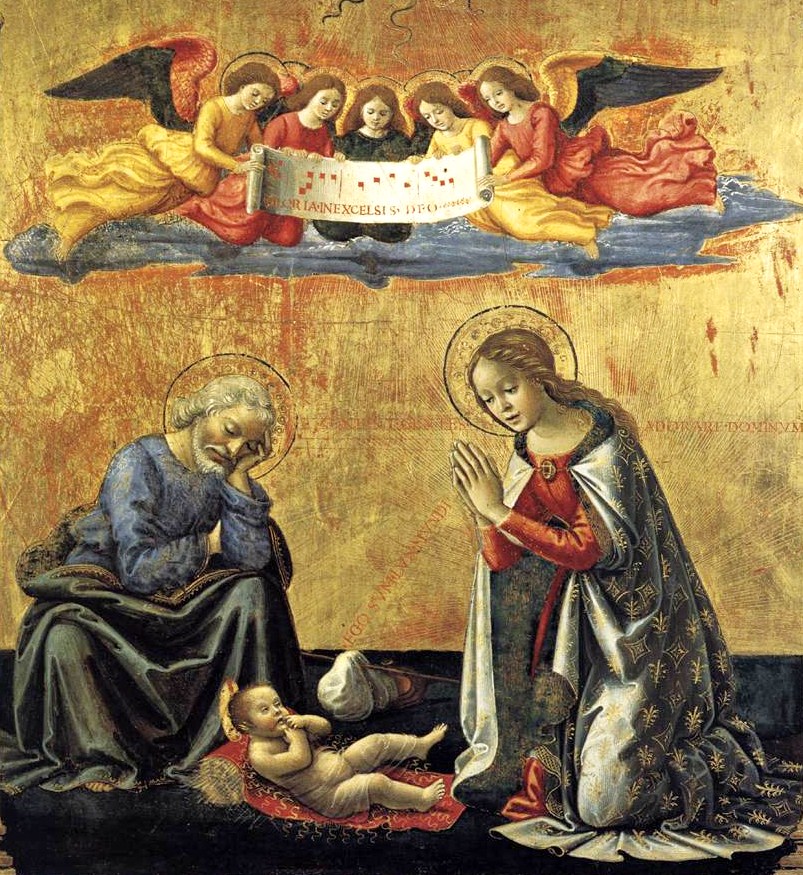 Sebastian Bach’s Christmas Oratorio. A six-part work lasting about three hours, it was written for the Christmas season of 1734, but incorporates several cantatas and other music written earlier. The first part of the cantata describes the birth of Jesus. Here are movements 5 through 9, the final movements of part one. It starts with a Chorale, the tenor recitative of the Evangelist follows, then another Chorale, then a Bass aria and the finale Chorale to the words of Martin Luther. This portion of Christmas Oratorio is performed by the Monteverdi Choir and the English Baroque Soloists under the baton of Sir John Eliot Gardiner. The picture on the left is by the great Italian master Domenico Ghirlandaio. It was painted in 1492 and these days it hangs in the Pinacoteca museum in Vatican. Note that the angels seem to need the sheet music to properly sing Gloria in excelsis Deo -- or maybe they invite us to sing along.Permalink
Sebastian Bach’s Christmas Oratorio. A six-part work lasting about three hours, it was written for the Christmas season of 1734, but incorporates several cantatas and other music written earlier. The first part of the cantata describes the birth of Jesus. Here are movements 5 through 9, the final movements of part one. It starts with a Chorale, the tenor recitative of the Evangelist follows, then another Chorale, then a Bass aria and the finale Chorale to the words of Martin Luther. This portion of Christmas Oratorio is performed by the Monteverdi Choir and the English Baroque Soloists under the baton of Sir John Eliot Gardiner. The picture on the left is by the great Italian master Domenico Ghirlandaio. It was painted in 1492 and these days it hangs in the Pinacoteca museum in Vatican. Note that the angels seem to need the sheet music to properly sing Gloria in excelsis Deo -- or maybe they invite us to sing along.Permalink
December 15, 2014. Beethoven and Kodali. Ludwig van Beethoven was born on December 16th, 1770 – at least that’s the accepted date: no direct record of his birth exists, but we know that he was baptized on the 17th. We celebrate his birthday by going through his piano sonatas. This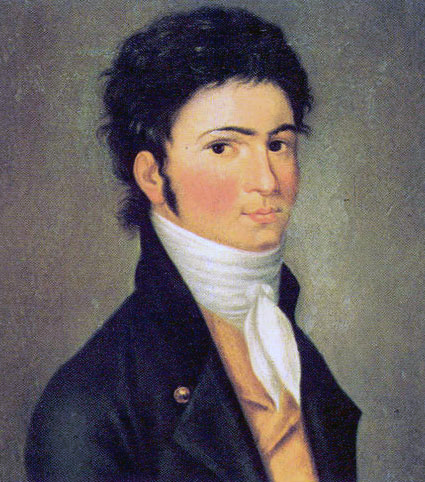 way, even if seemingly arbitrary, is as good as any: Beethoven’s piano sonatas are the not just an essential part of piano literature, they represent a pinnacle of European music. Last year it was Sonatas nos. 2 and 3, op. 2. This year we move on to Sonata no. 4, op. 7, in E-flat Major and the opus 10. Sonata no. 4 was written in 1796. By then Beethoven was living in Vienna (he had moved there from Bonn four years earlier). One of his benefactors, Prince Lichnowsky, provided him with living quarters. Young and cocky, Beethoven was widely acknowledged as a great piano virtuoso. He played in all major salons of the city, often improvising during the concerts. These improvisations brought him great acclaim. He composed, but not as extensively as he would just a couple year later. He also traveled: to Prague, with Lichnovsky, then to Pressburg (now Bratislava). Sonata no. 4 was published in 1797 and was dedicated to Babette Keglevich, Beethoven’s pupil. We know very little about Babette, except that she came from an old noble family, originally from Croatia, and that clearly she was a very good pianist – the sonata is technically quite difficult. It’s also pretty long, running about 28 minutes. Only Hammerklavier, no. 29 Op. 106 is longer. We’ll hear it in the 1975 performance by Sviatoslav Richter.
way, even if seemingly arbitrary, is as good as any: Beethoven’s piano sonatas are the not just an essential part of piano literature, they represent a pinnacle of European music. Last year it was Sonatas nos. 2 and 3, op. 2. This year we move on to Sonata no. 4, op. 7, in E-flat Major and the opus 10. Sonata no. 4 was written in 1796. By then Beethoven was living in Vienna (he had moved there from Bonn four years earlier). One of his benefactors, Prince Lichnowsky, provided him with living quarters. Young and cocky, Beethoven was widely acknowledged as a great piano virtuoso. He played in all major salons of the city, often improvising during the concerts. These improvisations brought him great acclaim. He composed, but not as extensively as he would just a couple year later. He also traveled: to Prague, with Lichnovsky, then to Pressburg (now Bratislava). Sonata no. 4 was published in 1797 and was dedicated to Babette Keglevich, Beethoven’s pupil. We know very little about Babette, except that she came from an old noble family, originally from Croatia, and that clearly she was a very good pianist – the sonata is technically quite difficult. It’s also pretty long, running about 28 minutes. Only Hammerklavier, no. 29 Op. 106 is longer. We’ll hear it in the 1975 performance by Sviatoslav Richter.
The next sonatas, op. 10, were written two years later, in 1798. 1798 was the year that General Bernadotte, the ambassador of the French Directory and the future King of Sweden (as Charles XIV), arrived in Vienna. It’s believed that it was Bernadotte who suggested to Beethoven that he write a symphony dedicated to the young, successful general by the name of Napoleon Bonaparte. Beethoven did write a symphony, his third (we know it as Eroica) and initially dedicated it to Napoleon, but once Napoleon proclaimed himself the emperor of France, Beethoven withdrew the dedication. Opus 10 consists of three sonatas, no. 5 in c minor, in three movements, no. 6 in F Major, also in three movements, and no. 7, in D Major, the largest of the three, in four movements. All three were dedicated to the Countess Anne Margarete von Browne, the wife of count Johann Georg von Browne, an important patron (Beethoven dedicated three string trios op. 9, written at the same time as the sonatas, to the count himself). The sonatas op. 10 are not performed very often, which is a pity: they are beautiful and sound fresh, while the modern concert repertory is often repetitive, with the same pieces being played over and over again. We can listen to sonata no. 5 and no. 6 in the performance by Alfred Brendel; sonata no. 7 is played by Annie Fischer.
Annie Fischer was a Hungarian pianist. She was born in Budapest in 1914. Despite the country’s tragic history, the 20th century saw a flowering of classical music in Hungary. Composers like Béla Bartók, Ernst von Dohnányi (Fischer’s teacher at the Franz Liszt Academy of Music), and later, György Ligeti and György Kurtág were all of the utmost importance. And then there were the conductors: Sir Georg Solti, Antal Doráti, the already-mentioned Dohnányi, Fritz Reiner, George Szell. (It’s interesting to note that most of the musicians we just mentioned were Jewish; most of the Hungarian Jews perished during the Holocaust). One of the most important composers of the first half of the 20th century was Zoltan Kodály, a friend of Béla Bartók. Kodály’s birthday is also this week: he was born on December 16th of 1882. Here’s one of his most popular symphonic pieces: the Háry János Suite from 1926. It’s based on Kodály’s opera, Háry János. The Cleveland Orchestra is conducted by George Szell.
PermalinkJanuary 8, 2014. Messiaen, Berlioz. Two great French composers, Olivier Messiaen and Hector Berlioz (and several others, see below) were born this week. Messiaen was born on December 10th,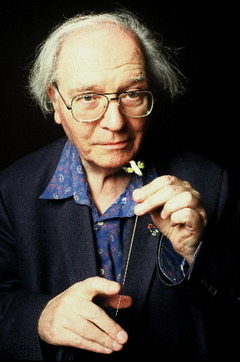 1908 in Avignon. His mother was a poet and his father – an English teacher and translator of Shakespeare into French. Olivier entered the Paris Conservatory at the age of 11 and while there he was awarded several prizes, in harmony and in fugue writing among them. He studied the organ, first with the composer and organist Marcel Dupré and later with Charles-Marie Widor, also a composer and one of the most famous organists of his time. In 1931 Messiaen became the organist of the church de la Sainte-Trinité in the 9th arrondissement, and remained in that position for the following 61 years. Messiaen accepted the Catholic faith at an early age, and many of his compositions were overtly religious. Early in his life (in 1932) he wrote an orchestral piece L'ascension ("The Ascension") and three years later, an organ work titled La Nativité du Seigneur (The Nativity of the Lord). Later in his career, in the 1960s, he wrote La Transfiguration de Notre Seigneur Jésus-Christ ("The Transfiguration of Our Lord Jesus Christ"), a huge work of about one and a half hour’s duration which is scored for the piano, cello and other instrumental solos, a large choir and the orchestra. Later in his life he wrote his only opera, Saint François d'Assise, based on the life of the saint (Messiaen wrote the libretto himself, studying historical sources in the process). One of most interesting pieces in this genre is his piano work Vingt regards sur l'enfant-Jésus (usually translated as “Twenty contemplations on the infant Jesus”). It consists of 20 movements, and we have several in our library. Here is the first movement, Regard du Père ("Contemplation of the Father"), a beautiful, deeply meditative piece, and here – Regard de l'étoile ("Contemplation of the star"), the second movement with its brief celestial motif. Both are performed by the pianist Pierre-Laurent Aimard, who studied with Yvonne Loriod, Messiaen’s second wife. (Aimard is one of the most interesting, highly regarded interpreters of modern music; he recently embarked on a tour playing Book I of Bach’s Well-Tempered Clavier. That, in our opinion, was less successful).
1908 in Avignon. His mother was a poet and his father – an English teacher and translator of Shakespeare into French. Olivier entered the Paris Conservatory at the age of 11 and while there he was awarded several prizes, in harmony and in fugue writing among them. He studied the organ, first with the composer and organist Marcel Dupré and later with Charles-Marie Widor, also a composer and one of the most famous organists of his time. In 1931 Messiaen became the organist of the church de la Sainte-Trinité in the 9th arrondissement, and remained in that position for the following 61 years. Messiaen accepted the Catholic faith at an early age, and many of his compositions were overtly religious. Early in his life (in 1932) he wrote an orchestral piece L'ascension ("The Ascension") and three years later, an organ work titled La Nativité du Seigneur (The Nativity of the Lord). Later in his career, in the 1960s, he wrote La Transfiguration de Notre Seigneur Jésus-Christ ("The Transfiguration of Our Lord Jesus Christ"), a huge work of about one and a half hour’s duration which is scored for the piano, cello and other instrumental solos, a large choir and the orchestra. Later in his life he wrote his only opera, Saint François d'Assise, based on the life of the saint (Messiaen wrote the libretto himself, studying historical sources in the process). One of most interesting pieces in this genre is his piano work Vingt regards sur l'enfant-Jésus (usually translated as “Twenty contemplations on the infant Jesus”). It consists of 20 movements, and we have several in our library. Here is the first movement, Regard du Père ("Contemplation of the Father"), a beautiful, deeply meditative piece, and here – Regard de l'étoile ("Contemplation of the star"), the second movement with its brief celestial motif. Both are performed by the pianist Pierre-Laurent Aimard, who studied with Yvonne Loriod, Messiaen’s second wife. (Aimard is one of the most interesting, highly regarded interpreters of modern music; he recently embarked on a tour playing Book I of Bach’s Well-Tempered Clavier. That, in our opinion, was less successful).
Hector Berlioz was born on December 11th, 1803 in a small town of La Côte-Saint-André in thesoutheast of France. One hundred years apart and completely different in styles, Berlioz and Messiaen have one thing in common: both were absolutely unique, outside of the mainstream music of their time. If you look at the timeline of Berlioz as a composer, it starts in 1830 with the publication of Symphonie fantastique and lasts for the following 30 years, the first half dedicated mostly to symphonic pieces, and the second half – to opera. It coincides with the most creative years of Chopin, Schumann, Mendelssohn in the first half, Wagner and Verdi in the second. Berlioz is unlike any of them. Franz Liszt, who was strongly influenced by Berlioz, is probably the closest to him in all of music literature. In France, Berlioz struggled to be recognized as a composer (Giacomo Meyerbeer was much more popular), even while being praised as a conductor (half a century later, in Vienna, that would also be Mahler’s fate). Symphonie fantastique was premier in December of 1830, and remained in the orchestral repertory ever since. is the second movement, Un Bal, in the performance by the Royal Concertgebouw Orchestra, Sir Colin Davis conducting.
We need to mention two more birthdays, that of Jean Sibelius (December 8th, 1865) and César Franck’s, on December 10th of 1822.Permalink
December 1, 2014. More of Brahms’s late piano music. In recent months we’ve written about Johannes Brahms’s two sets of piano music, Seven fantasies, op. 116 and Six Piano Pieces, op. 118. Today we continue with the middle opus, Three Intermezzos op.117, which Brahms, in a letter to a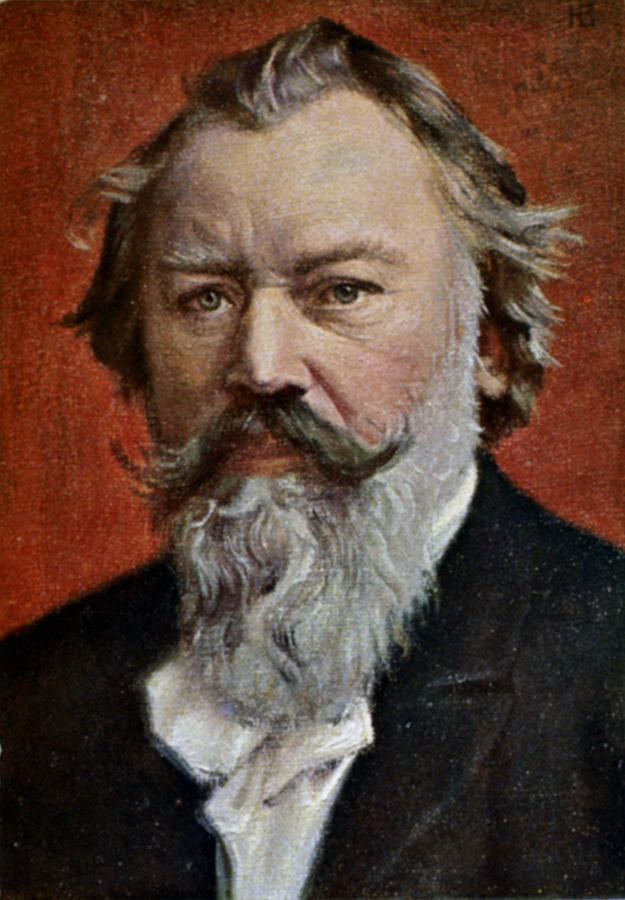 friend, called “lullabies of my sorrow.” Intermezzos were written in 1892, during the period of great personal loss. As always, we illustrate the pieces with music from our library. The pianist in these recordings is Yael Kareth. Yael was born in Jerusalem in 1986. She studied at the Tel Aviv Music Academy and then continued in London with Murray Perahia. She participated in the Itzhak Perlman Project in Israel and the US, the Aspen and Ravinia Festivals, and the West-Eastern Divan Orchestra under Daniel Barenboim. She also performed as a soloist with the Israel Philharmonic Orchestra under Zubin Mehta. Currently Yael lives in Berlin where she studies with Dmitri Bashkirov and Daniel Barenboim. The article follows.
friend, called “lullabies of my sorrow.” Intermezzos were written in 1892, during the period of great personal loss. As always, we illustrate the pieces with music from our library. The pianist in these recordings is Yael Kareth. Yael was born in Jerusalem in 1986. She studied at the Tel Aviv Music Academy and then continued in London with Murray Perahia. She participated in the Itzhak Perlman Project in Israel and the US, the Aspen and Ravinia Festivals, and the West-Eastern Divan Orchestra under Daniel Barenboim. She also performed as a soloist with the Israel Philharmonic Orchestra under Zubin Mehta. Currently Yael lives in Berlin where she studies with Dmitri Bashkirov and Daniel Barenboim. The article follows.
In contrast to the neighboring opp. 116 and 118, Brahms comprised op. 117 of only three intermezzi. However, these three works are of an unmistakably greater import than the similar works of those two collections (except, of course, the grim E-flat minor Intermezzo). Despite their subdued tone, they carry a weight that could hardly be found within either op. 116 or op. 118, yet together form a fulfilling whole. Continue here.
PermalinkNovember 24, 2014. Alfred Schnittke. We have to admit to having a problem with the term “Soviet,” as in “Soviet composer.” There is just so much negativity associated with the term, with all the totalitarian connotations and the evil that was perpetrated under its name during a large part of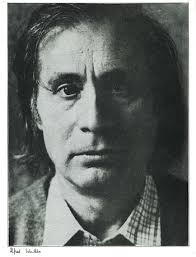 the 20th century. But what would you call a composer born on November 24th of 1934 in a city on river Volga, who then moved to Moscow, studied and later taught at the Moscow Conservatory, and was for a while a member of the Soviet Composer’s Union? On the other hand, what would you call a composer whose music was so non-conformist and “anti-Soviet” that it was banned by the same Composer’s Union? The life of Alfred Schnittke, one of the most interesting composers of the last half of the 20th century, was very unusual. He was born into a German-Jewish family. His Jewish father Harry was born in Frankfurt but brought to the Soviet Union in 1927 by his parents who, like so many Western intellectuals at that time, went to Russia to build a new, just society. Most of them perished in the Gulag, but not the Schnittkes. Harry became a well-known German translator and a journalist. During the Great Patriotic War, as WWII was called in the Soviet Union, Harry worked as a wartime correspondent. Once the war was over, he was stationed in Soviet-occupied Vienna to work in a newspaper established by the Soviet authorities. Harry brought his family with him, including the 12-year-old Alfred. It was in Vienna, the city of Mozart and Haydn, Beethoven and Schubert, Bruckner and Mahler, that Alfred started his musical education. Even though the family stayed in Vienna for just two years, the exposure to the Austrian-German tradition deeply influenced young Schnittke. They returned to the Soviet Union in 1948 and settled in the suburbs of Moscow. Alfred attended a music school and in 1953 entered the Moscow Conservatory, studying composition with Evgeny Golubev, a pupil of Myaskovsky, and eventually doing graduate work. In 1962 he assumed an assistant teaching position at the Conservatory but earned his living writing film scores. His relationship with the Soviet musical establishment was difficult from the beginning. Some of his work was banned and most of it rarely performed. He became officially accepted only in the late 1980s, during Gorbachev’s Perestroika.
the 20th century. But what would you call a composer born on November 24th of 1934 in a city on river Volga, who then moved to Moscow, studied and later taught at the Moscow Conservatory, and was for a while a member of the Soviet Composer’s Union? On the other hand, what would you call a composer whose music was so non-conformist and “anti-Soviet” that it was banned by the same Composer’s Union? The life of Alfred Schnittke, one of the most interesting composers of the last half of the 20th century, was very unusual. He was born into a German-Jewish family. His Jewish father Harry was born in Frankfurt but brought to the Soviet Union in 1927 by his parents who, like so many Western intellectuals at that time, went to Russia to build a new, just society. Most of them perished in the Gulag, but not the Schnittkes. Harry became a well-known German translator and a journalist. During the Great Patriotic War, as WWII was called in the Soviet Union, Harry worked as a wartime correspondent. Once the war was over, he was stationed in Soviet-occupied Vienna to work in a newspaper established by the Soviet authorities. Harry brought his family with him, including the 12-year-old Alfred. It was in Vienna, the city of Mozart and Haydn, Beethoven and Schubert, Bruckner and Mahler, that Alfred started his musical education. Even though the family stayed in Vienna for just two years, the exposure to the Austrian-German tradition deeply influenced young Schnittke. They returned to the Soviet Union in 1948 and settled in the suburbs of Moscow. Alfred attended a music school and in 1953 entered the Moscow Conservatory, studying composition with Evgeny Golubev, a pupil of Myaskovsky, and eventually doing graduate work. In 1962 he assumed an assistant teaching position at the Conservatory but earned his living writing film scores. His relationship with the Soviet musical establishment was difficult from the beginning. Some of his work was banned and most of it rarely performed. He became officially accepted only in the late 1980s, during Gorbachev’s Perestroika.
Schnittke was a very prolific composer, writing several operas, 10 symphonies, four violin concertos, several piano concertos, and many chamber and instrumental pieces. His early music was deeply influenced by Shostakovich, but eventually Schnittke evolved into a highly original composer. In 1971 he wrote an essay titled “Polystylistic Tendencies in Modern Music.” In it Schnittke pointed to composers he called “polystylistic,” who mixed and matched various styles into a coherent composition; those, in Schnittke’s opinion, included Luciano Berio, Edison Denisov, Krzysztof Penderecki and other. But it was Schnittke himself who became a major proponent of this style.
In 1985 Schnittke suffered a terrible stroke (doctors believed they had lost him several times) but recovered and continued composing, though his style became more introverted. In 1990 Schnittke left Russia and settled in Hamburg. He had another stroke in 1995, which paralyzed him; after that he stopped composing. Schnittke died in Hamburg on August 5th, 1998. His body was returned to Moscow and buried with state honors.
We have a number of Schnittke’s works in our library. Here’s his "polystylistic" and very representative piece from 1977 called Concerto Grosso No. 1. It’s performed by the dedicatees of the piece, the violinists Gidon Kremer and his then wife Tatiana Grindenko and the Chamber Orchestra of Europe, Heinrich Schiff conducting.
Jean-Baptiste Lully, the father of French Baroque, was born on 28th of November 1632. We’ll commemorate his birthday at a later date.Permalink
November 17, 2014. This week across centuries. Wilhelm Friedemann, a talented but rather unhappy eldest son of Johann Sebastian Bach, was born on November 22nd of 1710. Friedemann had a difficult character, later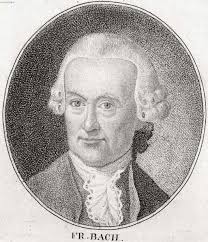 in his life he drank heavily, but it seems that his main problem was his rivalry – probably unconscious – with his father. As Grove Music Dictionary puts it, “… [W.F.] Bach clearly concentrated more on virtuoso performance than on his career as a composer, perhaps in the depressing realization that he could never attain his father’s perfection in all musical genres. His creative energies were therefore expressed more readily in free improvisation, and particularly in his late years the improvisation of fantasies on the organ and harpsichord was very important to him.” Still, in that rather barren period of the 18th century between the deaths of J.S. Bach and Handel and the time when Haydn and Mozart brought the new classical style to its pinnacle, Wilhelm Friedemann was clearly one of the very best. To prove it, here’s his Harpsichord Concerto in F minor, written around1767. Claudio Astronio conducts the Italian ensemble Harmonices Mundi from the harpsichord.
in his life he drank heavily, but it seems that his main problem was his rivalry – probably unconscious – with his father. As Grove Music Dictionary puts it, “… [W.F.] Bach clearly concentrated more on virtuoso performance than on his career as a composer, perhaps in the depressing realization that he could never attain his father’s perfection in all musical genres. His creative energies were therefore expressed more readily in free improvisation, and particularly in his late years the improvisation of fantasies on the organ and harpsichord was very important to him.” Still, in that rather barren period of the 18th century between the deaths of J.S. Bach and Handel and the time when Haydn and Mozart brought the new classical style to its pinnacle, Wilhelm Friedemann was clearly one of the very best. To prove it, here’s his Harpsichord Concerto in F minor, written around1767. Claudio Astronio conducts the Italian ensemble Harmonices Mundi from the harpsichord.
Firdemann died in 1784. Two years later, on November 18th of 1786 Carl Maria von Weber was born in Eutin, the Duchy of Holstein. Weber is mostly known for his operas, especially Der Freischütz, considered the first German “Romantic” opera. The operas are indeed the most important part of his body of work, but being a wonderful pianist Weber also wrote a number of pieces for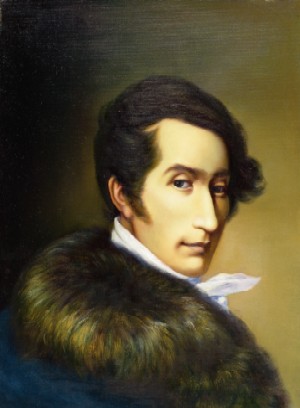 the instrument. He composed two piano concertos, four sonatas, and the Konzertstück (concert piece) in F minor for piano and orchestra. He completed the piece the morning of June 18th of 1821, the day Der Freischütz had its premier in Berlin. While the Konzertstück has just one movement (that’s why Weber decided not to call it a concerto), it has four sections and Weber provided a detailed – and highly romantic – program for each. The first one, according to the composer, describes a knight’s wife on a balcony, gazing into the distance, thinking about her husband who went on a Crusade to the Holy Land. In the second section, the excited wife, thinking of her possibly wounded husband, falls unconscious, but do we hear the trumpets in the distance? Yes we do, and in the third section, written in the gay C Major, the knights are returning from the Crusade to the delight of the crowds, and the couple is reunited. The forth, final episode depicts happiness without end. Felix Mendelssohn attended the premier, loved it and later played it many times. We don’t know whether Weber’s extravagant program helps the listener to appreciate the music but it’s a superb piece and is brilliantly played here by Alfred Brendel with the London Symphony Orchestra, Claudio Abbado conducting.
the instrument. He composed two piano concertos, four sonatas, and the Konzertstück (concert piece) in F minor for piano and orchestra. He completed the piece the morning of June 18th of 1821, the day Der Freischütz had its premier in Berlin. While the Konzertstück has just one movement (that’s why Weber decided not to call it a concerto), it has four sections and Weber provided a detailed – and highly romantic – program for each. The first one, according to the composer, describes a knight’s wife on a balcony, gazing into the distance, thinking about her husband who went on a Crusade to the Holy Land. In the second section, the excited wife, thinking of her possibly wounded husband, falls unconscious, but do we hear the trumpets in the distance? Yes we do, and in the third section, written in the gay C Major, the knights are returning from the Crusade to the delight of the crowds, and the couple is reunited. The forth, final episode depicts happiness without end. Felix Mendelssohn attended the premier, loved it and later played it many times. We don’t know whether Weber’s extravagant program helps the listener to appreciate the music but it’s a superb piece and is brilliantly played here by Alfred Brendel with the London Symphony Orchestra, Claudio Abbado conducting.
Weber suffered from tuberculosis and was just 39 when he died in 1826. Manuel de Falla, one of the most important Spanish composers of the early 20th century, was born fifty years later, on December 23rd of 1876 in the port city of Cádiz in Andalusia. Falla was the youngest of the three composers who revolutionized Spanish music at the end of the 19th century: Isaac Albéniz was born in 1860 and Enrique Granados – in 1867. While promoting the national roots of Spanish music, the three of them opened up a rather close-minded and xenophobic musical culture of the country to broader musical ideas, many of them emanating from France. Falla studied in Madrid as a young man, and then, in 1907, moved to Paris, where he met and befriended many composers, including Ravel, Debussy, and Stravinsky. Falla returned to Spain in 1914; by then he was recognized as one of the leading composers of the time. His opera La vida breve was successfully staged in France and Spain; he had a written a number of zarzuelas, songs, and chamber pieces. An even more productive period followed. One of the pieces Falla wrote shortly after returning from France was Nights in the Gardens of Spain for piano and orchestra, which he completed in 1915. Here it is, in the performance by the great champion of Spanish music, the late pianist Alicia de Larrocha; L'Orchestre de la Suisse Romande is conducted by Sergiu Comissiona.
Alfred Schnittke, one of the most important Russian composers of the second half of the 20th century, was also born this week, on November 24th of 1934. We commemorate his birthday every year and hope to do it in 2014 as well, albeit at a later date.
Permalink